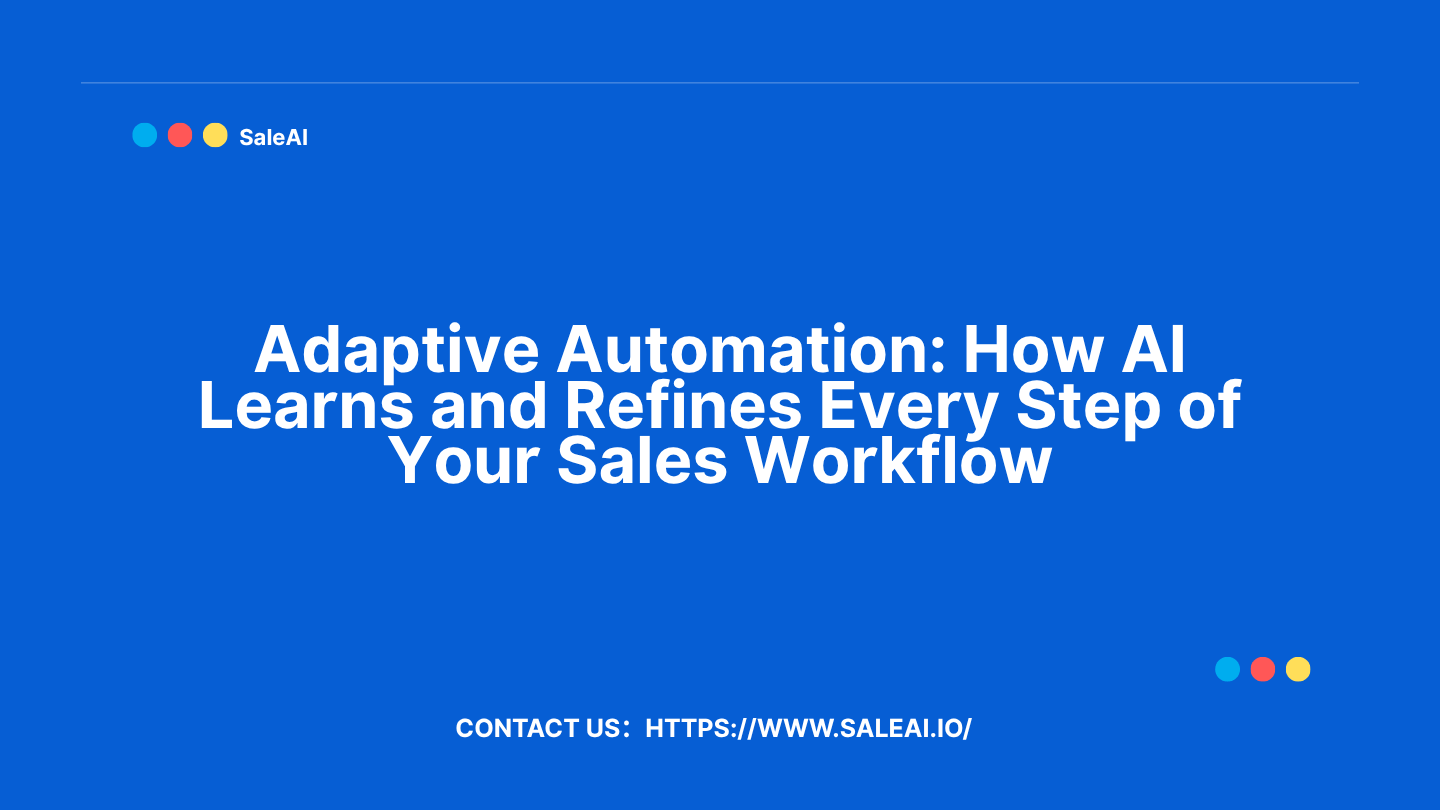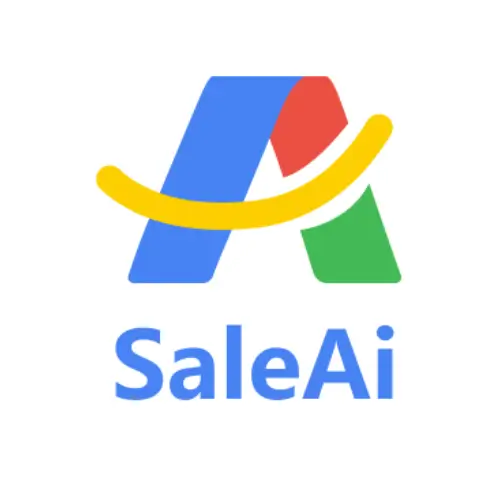
Automation used to mean repetition — a rule, a trigger, an outcome.
But in modern AI systems, automation has evolved.
It’s no longer just automating tasks — it’s adapting to context.
This new stage is called Adaptive Automation,
and it’s how AI learns, adjusts, and improves its performance continuously.
In sales, that means your workflow doesn’t just run automatically —
it gets smarter every time it runs.
(According to Gartner Research, adaptive AI systems improve operational accuracy by up to 52% over static automation.)
1️⃣ What Makes Automation “Adaptive”?
Traditional automation follows fixed rules:
“If X happens, do Y.”
Adaptive automation, by contrast, observes what happens after it acts.
It analyzes outcomes and learns which actions worked best — adjusting itself for the next cycle.
This feedback-driven model combines:
-
Machine learning (ML) – recognizing success/failure patterns
-
Context awareness – adapting to input and timing
-
Continuous optimization – improving response logic
Every SaleAI Agent is built on this foundation.
They don’t just execute; they evolve.
(A Forrester study found that systems using feedback-driven AI achieved 1.5× faster optimization cycles.)
2️⃣ Learning Through Feedback Loops
AI learns from what happens next.
When an outreach campaign succeeds or underperforms,
SaleAI doesn’t stop — it listens, measures, and adapts.
-
OutreachMail Agent measures response timing and tone effectiveness.
-
TradeReport Agent tracks downstream results, such as trade activity or buyer conversion.
-
Super Agent synthesizes the feedback into a refined plan:
“Emails with localized subjects yield 24% higher open rates.”
(The OECD notes that adaptive learning AI systems reduce response time errors by 33%.)
This cycle repeats — and the system improves itself.
3️⃣ Adapting Timing, Tone, and Targeting
Every sales interaction depends on three dimensions: when, what, and to whom.
Adaptive automation fine-tunes all three.
-
Timing: Using performance data to determine optimal send times.
-
Tone: Learning how different audiences respond to language style.
-
Targeting: Refining segmentation with predictive scoring from InsightScan Agent and Company Insight Agent.
(A Statista report shows adaptive targeting improves engagement by 40%.)
The more you use it, the more it learns what resonates — automatically.
4️⃣ The Architecture of a Self-Improving Workflow
Adaptive automation works like a neural sales network.
Each SaleAI Agent performs a function — lead research, outreach, reporting —
but all share a common feedback layer, where data flows back into the system for retraining.
-
Input: New tasks or data signals
-
Action: Execution by specialized agents
-
Feedback: Measured performance results
-
Adjustment: Updated parameters for next cycle
(The World Trade Organization (WTO) found that feedback-connected systems boost process efficiency by 47%.)
It’s the difference between a machine that runs
and a system that learns.
5️⃣ Example: Adaptive Outreach in Action
Let’s say your company is targeting renewable energy buyers in Europe.
-
InsightScan detects companies recently posting about solar projects.
-
OutreachMail sends introductions in a friendly, local tone.
-
TradeReport monitors resulting engagement and trade data.
-
Super Agent summarizes:
“Responses were 30% higher from firms using ‘green transition’ keywords. Suggest adjusting messaging regionally.”
That insight then updates your automation model automatically —
next time, the outreach fits even better.
(Research from Gartner shows adaptive campaigns sustain 35% higher performance consistency over 6 months.)
The system becomes a co-strategist, not just a worker.
6️⃣ Human Oversight, Machine Precision
Adaptive automation isn’t about removing people — it’s about amplifying them.
The human role shifts from “doing” to “directing.”
Sales teams set the objectives.
AI adjusts execution to reach them faster and smarter.
With SaleAI, teams focus on judgment, negotiation, and empathy —
while the platform handles refinement, optimization, and scale.
(The OECD AI Index highlights that hybrid human-AI workflows deliver 58% higher decision precision.)
That’s the perfect balance: human creativity, machine precision.
7️⃣ The Future: Self-Evolving Sales Systems
The next generation of sales technology won’t just automate —
it will self-evolve.
Adaptive automation is the foundation of that future.
By learning from every campaign, every click, and every signal,
AI becomes a true partner in sales strategy — not a tool, but a teammate.
SaleAI stands at that frontier:
An ecosystem where every Agent learns, adjusts, and refines —
so your entire sales system grows smarter with time.
👉 Explore SaleAI: https://www.saleai.io
👉 Meet Super Agent: https://www.saleai.io/en/agent/super-agent


